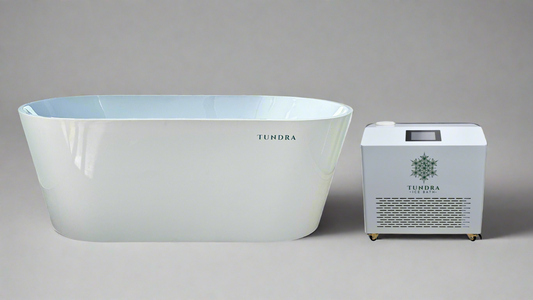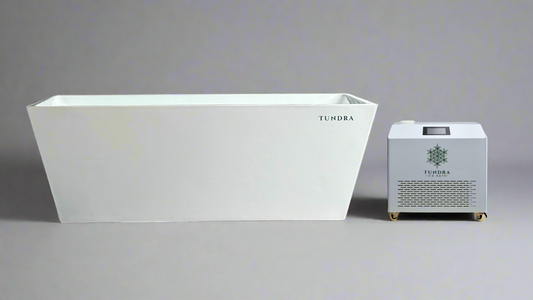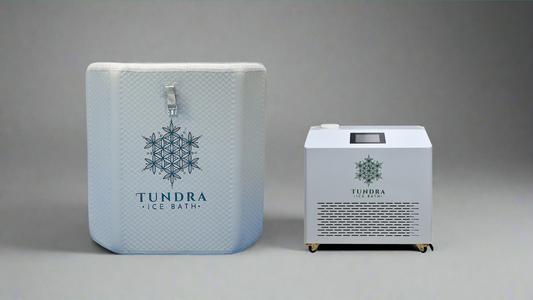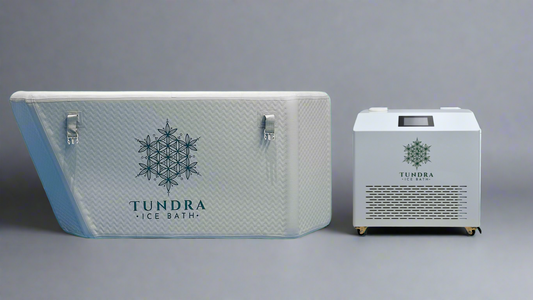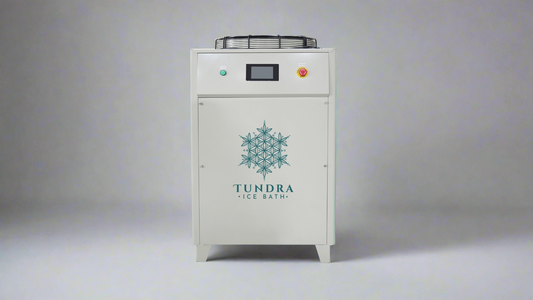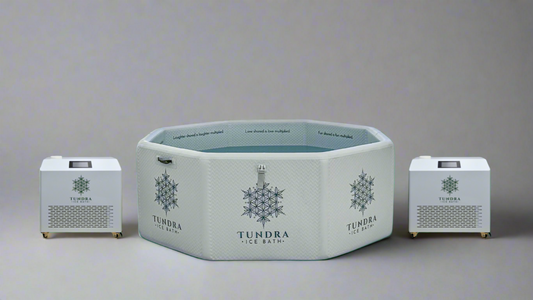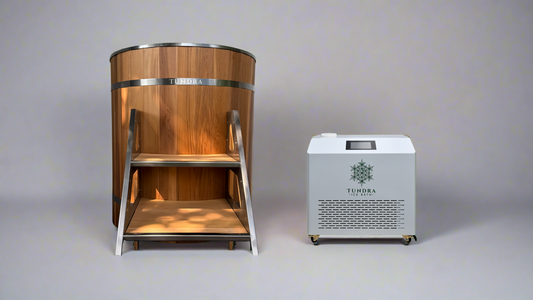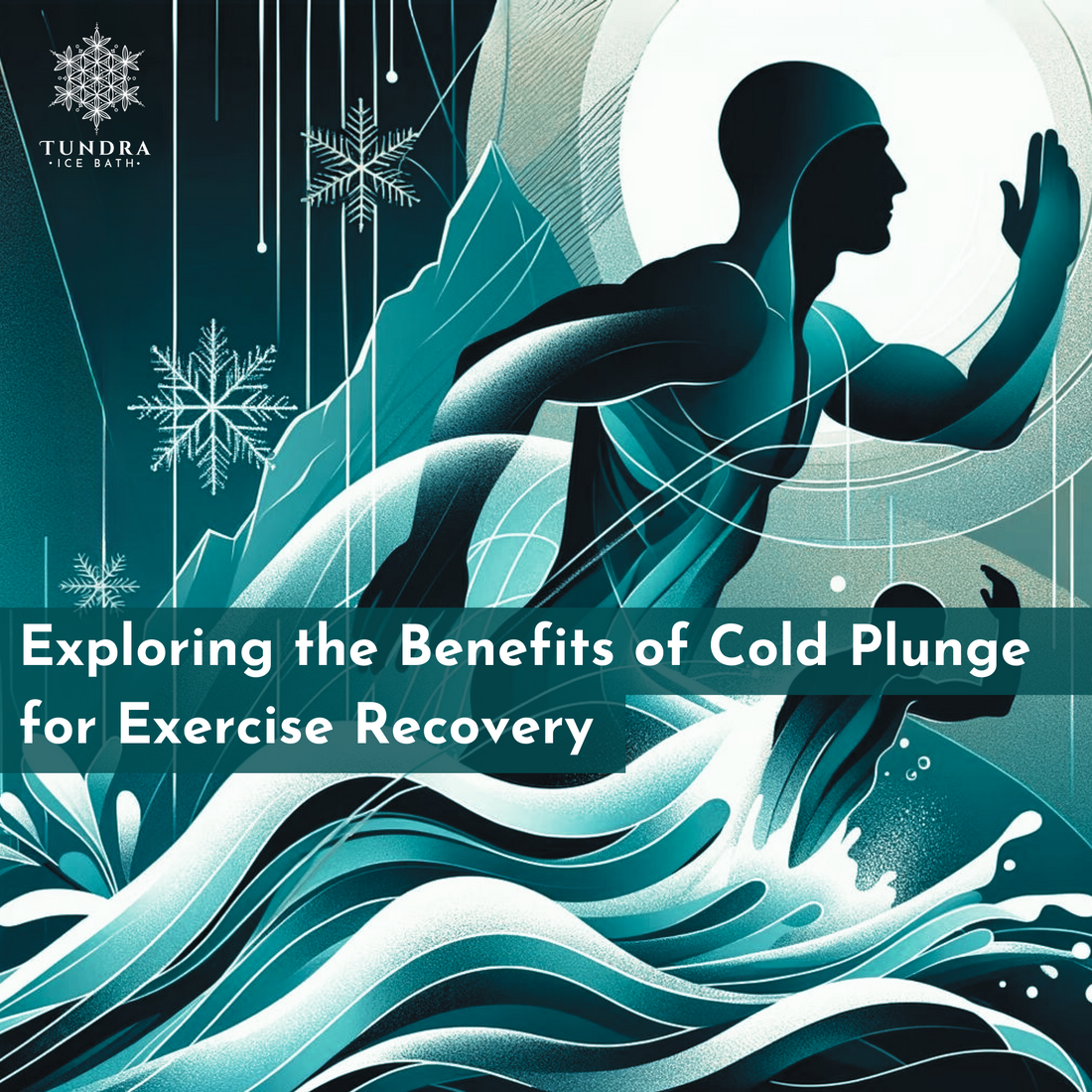
Exploring the Benefits of Cold Plunge (Cold Water Immersion) for Exercise Recovery
Share
The Rising Popularity of Cold Plunge in Athletic Recovery
Cold water immersion, commonly referred to as a "Cold Plunge," has become a widely recognized strategy for recovery after strenuous exercise. Research delving into its effects on athletic performance, muscle soreness, and markers like creatine kinase (CK) has highlighted its significance. This blog post, drawing from studies on PubMed and other scientific platforms, explores the effectiveness of Cold Plunge and the logic behind different immersion times.Cold Plunge's Impact on Athletic Performance and CK Levels
From the systematic review of 52 studies regarding the timing and conditions for optimal Cold Plunge (Cold Water Immersion) use:
-
Muscular Power Recovery Timing:
The review highlights that Cold Plunge significantly improves muscular power recovery within 24 hours following eccentric and high-intensity exercises. This quick recovery is crucial for athletes who undergo frequent and intense training sessions.
-
Reduction in Serum CK Levels:
Serum creatine kinase (CK) levels, an indicator of muscle damage, were found to reduce effectively within 24 hours post high-intensity exercise due to Cold Plunge. This indicates a rapid physiological response in muscle repair and recovery.
-
Alleviating Muscle Soreness:
Muscle soreness, a common issue post-exercise, especially after high-intensity workouts, was observed to be alleviated within the same 24-hour period. This suggests that Cold Plunge provides both immediate and lasting relief from soreness.
-
Boosting Perceived Recovery:
Apart from physical benefits, Cold Plunge was noted for enhancing the athletes' perceived recovery. This psychological aspect can be crucial for overall well-being and readiness for subsequent training sessions.
-
Effectiveness with "Shorter" Immersion Times:
The review notes an increase in effectiveness with shorter immersion times. While the exact optimal duration isn't specified, shorter immersions typically range from 5 to 15 minutes. This duration is sufficient to stimulate recovery benefits without the discomfort of prolonged cold exposure.
Comparing Cold Plunge with Whole-Body Cryotherapy
The study directly compared the effects of Cold Plunge (10 minutes at 10°C) with whole-body cryotherapy (3 minutes at -110°C). This comparison provides insights into the effectiveness of different cryotherapy methods for post-exercise recovery.
-
Enhancement in Jump Performance:
A key finding was that Cold Plunge showed a moderate advantage in improving performance in both single-leg and 2-leg countermovement jumps, measured 72 hours after exercise. This suggests a lasting positive impact on explosive strength and power recovery.
-
Reduction in Muscle Soreness:
The Cold Plunge group experienced reduced muscle soreness 48 hours post-exercise. This indicates not just immediate relief, but a sustained reduction in discomfort over two days after the workout.
-
Improved Recovery Perception:
Participants who underwent Cold Plunge reported an improved perception of recovery just 24 hours after the exercise. This highlights the psychological benefit in addition to the physical recovery advantages.
-
Comparative Efficacy:
These results demonstrate that Cold Plunge, with a relatively moderate water temperature and reasonable immersion time, can be more effective than the extreme cold and shorter duration of whole-body cryotherapy. This comparison is particularly relevant for athletes and trainers considering different recovery modalities.
-
Cold Plunge's Edge Over Other Methods:
The study showcases Cold Plunge’s superiority in several key areas of recovery, making it a more favorable option compared to other cryotherapy methods like whole-body cryotherapy, especially in terms of athletic performance and muscle recovery.
Systematic Review on Muscle Soreness Management
The systematic review and meta-analysis of 44 studies investigating Cold Plunge's effect on muscle soreness revealed some key points about immersion timing:
-
Immediate vs. Delayed Effects:
The review found that Cold Plunge was more effective than passive recovery methods (like resting or no intervention) for both immediate relief from muscle soreness as well as delayed recovery benefits. This suggests that Cold Plunge can offer both short-term relief and longer-term recovery advantages. -
Shorter Immersion Times:
The studies indicated that shorter immersion durations were particularly effective. Short immersion times typically range from about 5 to 10 minutes. This duration was found to be sufficient for reducing muscle soreness immediately following the exercise.
-
Medium Immersion Times:
Medium immersion times, often ranging between 10 to 15 minutes, were also shown to be beneficial. These durations were particularly effective for delayed muscle soreness relief, which can be crucial for athletes undergoing continuous training schedules.
-
Endurance Exercises:
The review highlighted that these timing benefits were especially pronounced following endurance exercises. Endurance exercises, such as long-distance running, cycling, or swimming, often lead to sustained muscle use, which can result in significant soreness.
-
Optimizing Recovery:
The findings suggest that for endurance athletes or those engaging in prolonged physical activities, strategically choosing immersion times – shorter for immediate relief and medium for ongoing recovery – can be an effective way to manage muscle soreness and enhance overall recovery.
The Role of Water Temperature and Immersion Time in Cold Plunge
-
Meta-Analysis of Nine Studies:
The referenced meta-analysis included nine studies focusing on the efficacy of Cold Plunge in treating muscle soreness. This comprehensive analysis provides a broad perspective on how different Cold Plunge protocols affect recovery.
-
Superiority Over Passive Recovery:
The meta-analysis found that Cold Plunge significantly outperforms passive recovery (like resting or no treatment) in both immediate and delayed effects on muscle soreness. This indicates Cold Plunge’s effectiveness in both short-term relief and long-term muscle recovery.
-
Optimal Water Temperatures:
The most effective water temperatures for Cold Plunge were found to be between 10 and 15 degrees Celsius. This temperature range is cold enough to provide therapeutic benefits without being excessively harsh, making it tolerable for most individuals.
-
Effective Immersion Times:
Immersion times of 10 to 15 minutes were identified as optimal. This duration strikes a balance between providing enough exposure to the cold for therapeutic effects and preventing discomfort or potential negative effects from overexposure.
-
Maximizing Benefits of Cold Plunge:
The study underlines the importance of carefully selecting both the water temperature and immersion time to maximize the benefits of Cold Plunge. This tailored approach allows for a more effective and personalized recovery experience.
-
Implications for Practice:
These findings are particularly relevant for athletes, coaches, and physiotherapists in designing effective Cold Plunge protocols. Understanding the ideal temperature and duration can help optimize recovery and improve overall athletic performance.
Conclusive Takeaway: The Comprehensive Benefits of Cold Plunge in Athletic Recovery
The systematic analysis and comparison of Cold Plunge with other recovery methods have clearly established its significant role in athletic recovery. Key takeaways from the research include:
-
Enhanced Muscular Recovery:
Cold Plunge significantly improves muscular power recovery within 24 hours, particularly after eccentric and high-intensity exercises. This rapid enhancement is crucial for athletes in rigorous training regimens.
-
Reduced Muscle Damage Indicators:
Post-exercise, Cold Plunge effectively lowers serum creatine kinase levels, a marker of muscle damage, signifying its role in accelerating muscle repair.
-
Alleviation of Muscle Soreness:
Cold Plunge offers both immediate and sustained relief from muscle soreness, especially after intense workouts, enhancing overall recovery.
-
Improved Recovery Perception:
Athletes experience an improved sense of recovery post-Cold Plunge, which is beneficial for their psychological well-being and readiness for upcoming training.
-
Optimal Immersion Times and Temperatures:
The research underscores the importance of immersion time, with shorter durations (5-15 minutes) being more effective. Additionally, water temperatures between 10 and 15 degrees Celsius yield the best results.
-
Superiority over Whole-Body Cryotherapy:
Cold Plunge demonstrates a notable advantage over whole-body cryotherapy in improving jump performance, reducing soreness, and enhancing recovery perception.
-
Effectiveness Across Exercise Types:
Cold Plunge is particularly beneficial following endurance exercises, suggesting its versatility in various training contexts.
References:
- Systematic Review on Athletic Performance and CK Levels (PubMed)
- Comparison of CWI and Whole-Body Cryotherapy (Human Kinetics Journals)
- Systematic Review and Meta-Analysis on Muscle Soreness (PubMed)
- Meta-Analysis on Water Temperature and Immersion Time (PubMed)

